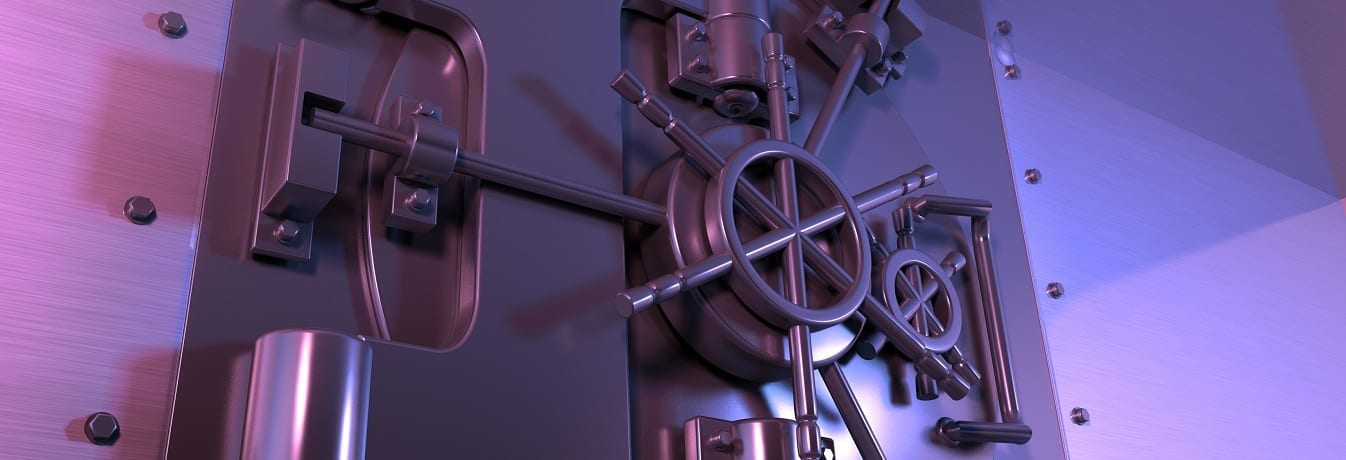
We live in an age where, unfortunately, it is essential for us all to be adequately protected from the various dangers we, and our devices and networks, may encounter online. In order to combat these cyber threats, the cyber security industry is working tirelessly to try and outpace those that may wish to do harm to us or our technologies. In this series of articles, we’ll be looking at what cyber security is overall, what the threats we face are, and how we could overcome the challenges we face using various different cutting-edge technologies currently in development.
In the last two articles of this three-part series, we’ve looked at what cyber security is and why it has become such an essential element of everyday life. We’ve also detailed several of the biggest threats facing both companies and individuals, how they infect systems and what kind of damage they are capable of doing.
Armed with this knowledge, let’s now start off the final part of the series by taking a look at how best to protect ourselves from these threats.
There are several ways in which businesses and individuals can protect themselves from the variety of cyber threats out there and, what’s more, entire industries have now arisen that are dedicating themselves to trying to prove increasingly secure and reliable ways to keep businesses and individuals safe and their personal and sensitive information secure.
Where Do I Need Protecting?
So, let’s start with the basics. Firstly, in order to keep themselves secure, a large number of businesses and enterprises will take the time to find out where exactly they could be vulnerable to cyber-attacks or sabotage from within.
Risk assessments are becoming more and more commonplace within the field of cyber security and are most regularly used by larger organisations and institutions such as governments or transnational corporations.
In order to discover where best to use any available cyber security resources, businesses and enterprises will need to know where their systems are vulnerable and how.
This is usually done by a third-party analyst and can prove incredibly useful when attempting to find out where best to allocate cyber security resources.
Another, less conventional way that some larger organisations attempt to test their own systems is by the hiring of “ethical hackers” who attempt to breach their systems in order to work out their weak points without the consequences of a real hack.
In a similar way to penetration testing, ethical hackers test the limits of a company’s security systems in an ethical and legal manner so as to ensure that they are patched up before any malicious hackers find them.
How Do I Protect Myself?
Once the results of any cyber security-based risk assessment are in and there is a greater insight into where a business or individual may be vulnerable, it’s time to start building your system.
Firewalls, encryption, automated alerts and notifications, security-as-a-service, there are an enormous number of options available for those looking to beef up their cyber security systems.
However, just purchasing whatever sounds futuristic then installing it and hoping for the best is never a good way to secure anything.
When looking for the best systems for their specific purposes, companies with the most adequate cyber security systems select the equipment that covers both their requirements and any future additions that could prove useful in the long-term.
The most important time after having discovered a cyber security incident has taken place are the few moments taken to decide what course of action to take.
When entrusted to human beings, these moments can prove to high-pressure or to fleeting for them to be able to act in the most appropriate manner for the situation. This is now changing thanks to automated systems and artificial intelligence.
Predictive behavioral systems and automated alarms to alert both security experts and data officers of an incident or breach are becoming increasingly common and it seems reasonable to expect that AI systems will begin to take a much larger role in securing cyberspace as their technologies develop and mature.
Having acquired the technologies required to protect themselves, businesses and individuals should now turn to ensuring they remained protected into the future.
How Do I Stay Protected?
Whilst most products have a fairly decent shelf-life, eventually all will be replaced with something new and improved. Relying on several cyber security technologies acquired ten years ago to keep you protected from the threats of today is not only optimistic but, in some severe cases, outright dangerous.
In many cases, once cyber security measures are in place, their maintenance and operation depend on the further implementation of intelligent use policies of network systems and services so as to ensure security systems aren’t compromised in the future. This can also be helped by the acquisition of technologies ready for future additions, as mentioned earlier.
Hardware and software are constantly changing, so smooth future upgrade paths are a smart way of ensuring long-term protection through security updates and hardware add-ons. In some cases, the overhaul of legacy equipment may seem initially expensive, but if a major cyber-attack where to happen, those initial overhaul costs could possibly pale in comparison to the damage cause.
As our reliance on networked and connected technologies increases, so too does the risk of our data and our identities be stolen or our technologies and infrastructure vandalized and damaged. This is a risk we all live with today, so investing in adequate protection for tomorrow seems like a reasonable expectation in return for staying secure.